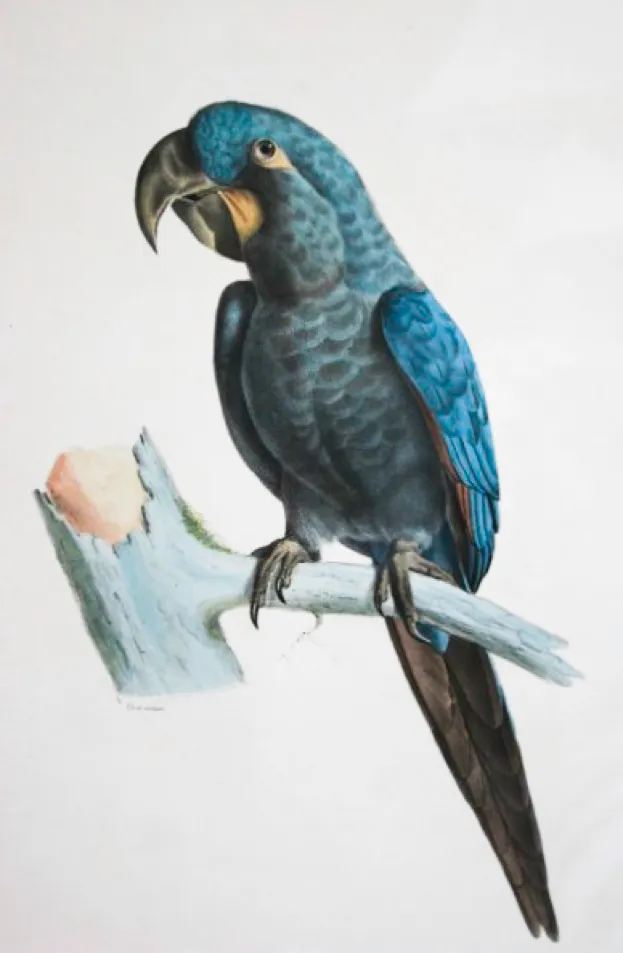Conservationists at BirdLife International have used a new statistical approach to analyse 51 bird species listed as Critically Endangered on the IUCN Red List, and believe that eight of them need to change category.
These include the glaucous macaw and Pernambuco pygmy-owl, which are now recommended to be listed as Critically Endangered (Possibly Extinct), and the cryptic treehunter and poo-uli which have been re-listed as Extinct.
Also changing category is the Spix’s macaw (main image, above), now known by many around the world after the 2011 children’s film Rio where the main character “Blu” was a Spix’s macaw, which is now considered to be Extinct in the Wild.
“Determining whether a species has gone extinct is challenging as it is often difficult to tell if the last few individuals have died, especially for poorly known species in remote locations,” says Stuart Butchart, BirdLife International’s chief scientist and lead author of the paper.

Many of the species listed have not been seen for more than a decade. For example the New Caledonian lorikeet and the glaucous macaw, both now listed as Critically Endangered (Possibly Extinct), were last seen in 1987 and 1998 respectively.
Despite such time lengths, the authors have not listed them as Extinct or Extinct in the Wild, as Butchart explains, “while we need an accurate measure of extinction rates, giving up on a species prematurely risks committing the so-called Romeo Error, where conservation efforts are abandoned prematurely on the presumption that the species has disappeared.”
This has happened with a number of species, which are described as Lazarus species. Recent examples include the New Zealand storm petrel (not seen since 1850, then rediscovered in 2003), the night parrot (first verified sighting in almost 100 years in 2013) and the blue-eyed ground-dove (not seen since 1941, rediscovered in 2015).


“While the results suggest that it is too late to help some iconic species, birds are better known than any other taxonomic class, so we know which species are at greatest risk and what actions and which locations are needed to save them,” says Melanie Heath, director of science, policy and information management at BirdLife International.
“This study should inspire a redoubling of efforts to prevent further human-induced extinctions in the coming years.”
Many wildlife declines and extinctions occur on islands, where a species is endemic and limited in distribution. These populations are particularly threatened, and sometimes wiped out, by invasive alien species (such as rats, cats, or goats) or hunting and trapping.

However, five of the eight extinctions in the new assessment have occurred on the South American continent, and four of these five took place in Brazil.
This highlights the devastating effect of deforestation occurring on the continent.
“These recently confirmed extinctions are a consequence of the intense habitat loss we have been facing in Brazil, especially in the Northeast Atlantic Forest,” says Pedro Develey, executive director of SAVE Brasil, a BirdLife Partner.
“Other Critically Endangered species still living in this region are in the brink of extinction, however our current conservation efforts are preserving the forest remains, restoring habitats and engaging the local communities. It is very sad to know that we lost these species, but it is not too late to save many others.”
New recommendations for the eight bird species:
Common Name - 2017 Red List category - New recommendation - Estimated date of extinction
- Spix's macaw - Critically Endangered (Extinct in the Wild) - Extinct in the Wild - 2000
- Cryptic treehunter - Critically Endangered (Extinct in the Wild) - Extinct - 2007
- Alagoas foliage-gleaner - Critically Endangered - Extinct - 2011
- Poo-uli - Critically Endangered (Possibly Extinct) - Extinct - 2004
- Glaucous macaw - Critically Endangered - Critically Endangered (Possibly Extinct) - 1998
- Pernambuco pygmy-owl - Critically Endangered - Critically Endangered (Possibly Extinct) - 2001
- Javan lapwing - Critically Endangered - Critically Endangered (Possibly Extinct) - 1944
- New Caledonia lorikeet - Critically Endangered - Critically Endangered (Possibly Extinct) - 1987

